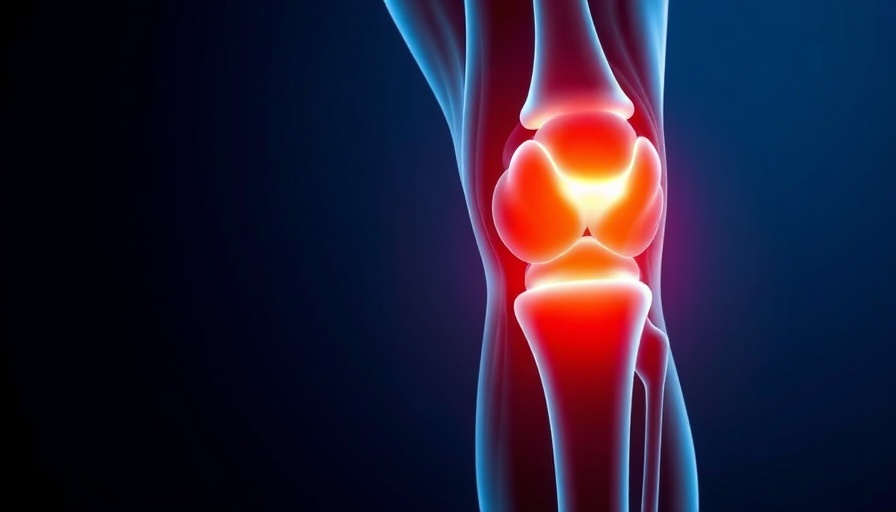
The Hidden Power of Gait: A Simple Adjustment
Imagine delaying knee surgery by simply adjusting how you walk. A groundbreaking study led by the University of Utah reveals that a small tweak—changing the angle of the foot while walking—could ease osteoarthritis pain as effectively as medication. With nearly 25% of individuals over the age of 40 grappling with osteoarthritis, the implications of this research stretch far beyond pain relief, addressing the debilitating nature of a condition that has long required surgical intervention.
The Science Behind Gait Retraining
Scientists at the University of Utah, along with teams from New York University and Stanford University, have demonstrated how this method—gait retraining—can not only alleviate pain but also help protect knee cartilage from further deterioration. Conducted as a year-long randomized control trial, participants reported reduced knee stress and maintained improvements for over a year.
Dr. Scott Uhlrich, co-lead researcher, points out that the method isn’t simply about changing foot angles but rather personalizing these adjustments to match an individual’s natural gait. Unlike previous methods that prescribed a one-size-fits-all approach, this personalized technique has seen more success in diminishing joint stress.
Why Personalized Solutions Matter
The research highlights the importance of a tailored approach in health interventions. Traditional remedies in osteoarthritis often involve generalized solutions that might not address individual needs. The biomechanical intervention used in the recent study demonstrated effectiveness in targeting specific issues related to knee loading, with variance among participants in how they adapted to the new walking pattern.
By taking into account individual walking mechanics through advanced tools like motion-capture cameras and pressure-sensitive treadmills, researchers could identify optimal walking patterns, potentially leading to less need for pain management medications and delaying surgery.
Empirical Evidence vs. Long-Standing Practices
This study marks a pivotal change in the perspective toward managing osteoarthritis, often reliant on medication and surgery, which carry risks and side effects. With published findings in The Lancet Rheumatology, the implications of this research may encourage healthcare providers to explore non-invasive options more thoroughly.
While exercises and physical therapy have been recommended for many patients, the subtle repositioning of foot placement during walking offers a fresh conversation on proactive knee health measures. For busy professionals, especially in the tech and marketing sectors, this breakthrough could inspire new ways to handle day-to-day discomfort.
The Broader Impact on Quality of Life
Understanding the psychological burden faced by individuals coping with chronic joint pain can influence how such scientific advancements are communicated. As professionals increasingly embrace health and wellness practices, integrating gait retraining into everyday life could empower individuals living with chronic pain, ultimately enhancing productivity and overall quality of life.
Moreover, this opportunity goes beyond treatment; it opens the door for preventative measures in a demographic that may be predisposed to joint issues due to lifestyle factors such as prolonged sitting and limited physical activity. Simple adjustments can foster healthier habits and improve long-term outcomes for many.
Real-World Applications: What Can Executives Do?
Given the novelty of gait retraining, executives and workplace wellness leaders should consider integrating this advice into corporate wellness programs. Simple educational initiatives aimed at increasing awareness about the benefits of proper walking habits could have substantial effects on overall employee health and reduce future medical costs.
Additionally, supporting physical activities that encourage proper gait practices through workshops or sessions can be an exemplary investment towards a healthier workforce. As companies increasingly prioritize mental and physical well-being, such strategies can reflect positively in employee engagement and output.
Looking Ahead: Future Innovations in Health Tech
The convergence of technology and healthcare signifies a future rich with innovations. As health tech continues to evolve, incorporating wearable technology that monitors gait and offers real-time feedback for adjustments could change the way we address joint health challenges. This represents not just a shift in therapy for osteoarthritis but also a new horizon for preventive healthcare, putting tools directly into the hands of individuals.
As we observe the trends of personalized medicine and its growing significance, being proactive about knee health is more crucial than ever in an aging population. The unique intersection of biomechanics, technology, and healthcare offers promising avenues for reducing pain and improving mobility—necessities for professionals who often find their productivity tethered to their physical well-being.
Conclusion: An Invitation to Embrace Change
In summary, the research highlights staggering potential for a simple change to how we walk—a potential that can redefine the treatment landscape for osteoarthritis. As businesses and professionals facing the challenges of aging populations and increasing medical costs, embracing innovations like gait retraining is not just an option; it’s a proactive strategy we should all consider. Understanding the science and benefits behind such innovations is key to enhancing personal and workplace wellness, and ultimately, revealing a path to better health for individuals and communities alike.
For those interested, further exploration into the field of gait retraining presents exciting opportunities. Keeping informed on the latest research and its implications can empower innovative solutions that bridge the gap between wellness and productivity. Let’s move forward—and let’s do it pain-free.
 Add Row
Add Row  Add
Add 




Write A Comment